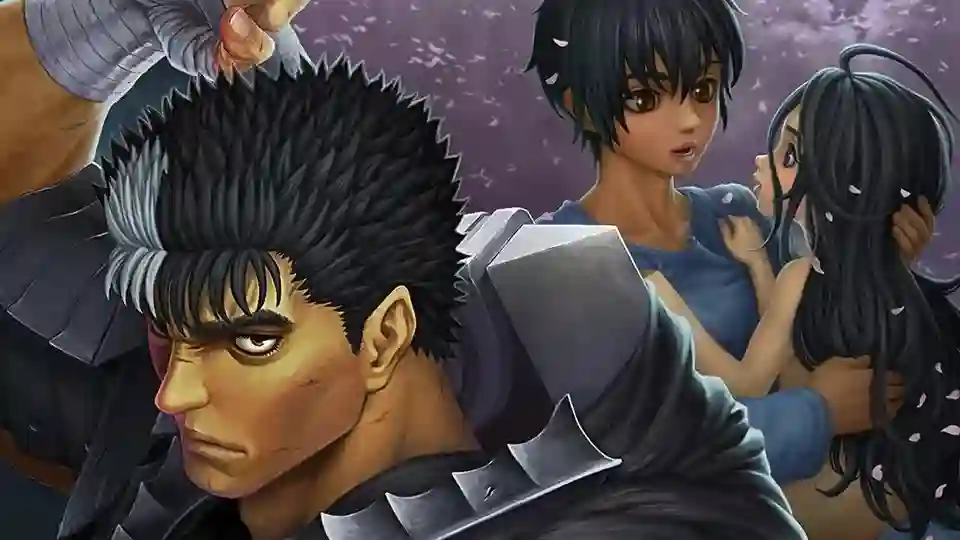Kentaro Miura’s “Berserk” is a manga series renowned for its intricate storytelling, complex characters, and dark and foreboding world. Within this grim and unforgiving landscape, the enigmatic and macabre artifact known as the Behelit plays a central and pivotal role. In this article, we will delve into the significance of the Behelit, its mysterious origins, its role in the narrative, and the profound impact it has on the characters and their destinies within the world of “Berserk.”
The Enigmatic Behelit
The Behelit is a mysterious and malevolent object that appears as a small, egg-shaped trinket. However, its outward appearance belies its true nature and the dark and supernatural power it possesses. The Behelit is characterized by its grotesque, fleshy design, adorned with a human face and intricate patterns.
Throughout the series, the Behelit is depicted as an object of dread and fascination. Its presence is often associated with impending doom and the unfolding of tragic and nightmarish events. The Behelit embodies the pervasive theme of fate and the inevitability of human suffering within the world of “Berserk.”
The Behelit’s Origins
The origins of the Behelit remain shrouded in mystery, adding to its aura of enigma. It is revealed that the Behelits are created by a mysterious group known as the God Hand, transcendent beings that manipulate the destinies of humans in the “Berserk” universe. The God Hand uses the Behelits as instruments to select individuals and mark them for a profound and horrifying transformation.
Individuals chosen by a Behelit are referred to as “Apostles.” These Apostles are granted incredible power, but at a terrible cost—they are required to make a profound sacrifice, often involving the death of a loved one or a heinous act. The Behelit serves as the catalyst for this transformation, and its activation marks a turning point in the life of the chosen individual.
The Activation of the Behelit
The Behelit is not merely a passive object; it possesses the ability to sense the profound despair and suffering within a person’s heart. When an individual reaches the depths of their despair, the Behelit activates, opening its grotesque mouth and emitting a piercing wail. This signal summons the God Hand, who descend to the mortal realm to make an offer to the chosen individual.
The activation of the Behelit is a moment of profound significance in “Berserk,” often heralding a moment of nightmarish transformation and tragedy. It is a stark reminder of the inescapable nature of fate within the series, as characters are inexorably drawn into a web of supernatural forces beyond their control.
The Tragic Transformation of Apostles
Individuals who accept the God Hand’s offer and activate the Behelit undergo a grotesque and nightmarish transformation. They become Apostles, supernatural beings with incredible power and the ability to manifest their inner desires. However, this transformation comes at an immeasurable cost—the loss of their humanity and the requirement to make a profound sacrifice.
The sacrifices demanded by the Behelit are often heinous and horrific, involving the death of loved ones or the betrayal of those closest to the chosen individual. These sacrifices serve as a cruel reminder of the moral ambiguity and brutality that defines the “Berserk” world. The Behelit’s role in facilitating these transformations highlights the moral complexity of the series and the extent to which characters are willing to go to fulfill their desires.
Griffith and the Eclipse
One of the most significant and harrowing instances of the Behelit’s activation occurs with Griffith, the former leader of the Band of the Hawk. Griffith’s activation of the Behelit, known as the Crimson Behelit, marks a turning point in the series and leads to the cataclysmic event known as the Eclipse.
Griffith’s descent into darkness and his transformation into a member of the God Hand, known as Femto, is a pivotal moment in “Berserk.” The Eclipse is a nightmarish and gruesome ceremony in which Griffith sacrifices his comrades, including Guts’ beloved Casca, in exchange for his newfound power and transcendence. The Behelit’s role in Griffith’s transformation underscores the extent to which fate and the Behelit itself shape the destinies of the characters.
Guts and the Brand of Sacrifice
Guts, the series’ protagonist, bears a unique and tragic connection to the Behelit and the God Hand. During the Eclipse, Guts is marked with a mysterious and cursed symbol known as the “Brand of Sacrifice.” This brand signifies his status as a sacrifice to the God Hand and marks him as a target for malevolent and supernatural forces.
The Brand of Sacrifice is a constant reminder of the dark and foreboding world in which Guts exists. It attracts demonic entities known as Apostles, who relentlessly pursue Guts and seek to consume his soul. The Behelit’s role in the activation of the Brand of Sacrifice highlights its central role in the series’ exploration of fate, suffering, and the inescapable nature of destiny.
The Behelit as a Symbol of Despair
The Behelit serves as a powerful symbol of despair and the corrupting influence of ambition and desire within the “Berserk” universe. It represents the relentless pursuit of power at any cost and the moral compromises individuals are willing to make to achieve their goals. The Behelit embodies the moral ambiguity and darkness that permeate the series, challenging conventional notions of heroism and villainy.
Conclusion
The Behelit is a central and enigmatic element of Kentaro Miura’s “Berserk,” representing the series‘ themes of fate, suffering, and the corrupting influence of ambition. Its mysterious origins, its role in facilitating nightmarish transformations, and its connection to characters like Griffith and Guts make it a symbol of profound significance within the narrative.
As readers journey through the dark and foreboding world of “Berserk,” the Behelit serves as a constant reminder of the inescapable nature of destiny and the moral complexities that define the series. Kentaro Miura’s creation is a testament to the power of symbolism and the exploration of profound philosophical themes within the medium of manga.








